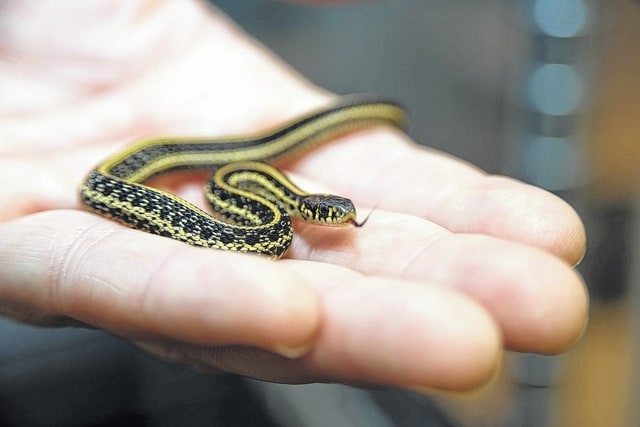
A state-endangered snake from the Columbus Zoo and Aquarium’s conservation program seems to be making a full recovery from skin cancer, thanks to the donated services of a regional pet cancer treatment facility.
The treatment provided a way for the plains garter snake to continue her participation in a breeder program, which is designed to restore the state’s wild population of these native reptiles, according to officials at the zoo in Powell. She has given birth to more than 100 neonates while in the program and, following the surgery, successfully gave birth to a live litter of 12.
The radiation therapy was provided free by MedVet Medical & Cancer Centers for Pets. Without their services, the snake’s role in species conservation would have likely ended, zoo officials said.
“The snake would have died without treatment,” said veterinarian and Vice President of Animal Health at the Columbus Zoo, Dr. Randy Junge. “I’m proud of the length we are able to go for some of these smaller creatures that might not get the attention that an elephant or tiger would, but are no less important.”
The plains garter resides in tall grass prairies, which have disappeared by 99 percent throughout the country.
“In order to save the few prairies we have left in Ohio, we need to save the important animals that reside within these unique ecosystems,” said assistant curator Becky Ellsworth. “The garter snakes fill the niche of preying on insects, worms, snails, slugs, amphibians, fish and small rodents. They are an important cog in the ecosystem wheel.”
By 1998, experts estimated that Ohio’s population of the plains garter snake, which is one of four species of garter snake and the only one that is endangered, had diminished to 94 percent. The Ohio Division of Wildlife took action by inviting the Columbus Zoo to develop a state recovery program, and a cooperative breeding program was created the following year. The zoo has since released a total of almost 300 snakes at Killdeer Plains Wildlife Area, a 9,230-acre reserve in north-central Ohio.
The patient is one of only six breeder snakes (one of three females) at the Columbus Zoo. Being able to extend her life using specialized equipment was a rare opportunity for zoo staff.
“MedVet has been generous about donating their time and equipment for treating some of our more unique cases,” Junge said. “It’s a win-win. They get a chance to do something different and we get to pursue the best treatment available for our animals.”
MedVet’s oncology specialty leader and radiation oncologist, Dr. Deborah Prescott, said that while it is not uncommon for animals to develop melanomas, little information about skin cancer in snakes is available. One challenge, for instance, was determining how to keep the snake still in the treatment room, where no one else could enter.
“Deciding how to immobilize the patient with the least risk to the patient was the greatest challenge,” Prescott said.
The team was able to do this by placing the patient in a tube instead of using sedatives, which could have been dangerous for a snake of this small size.


